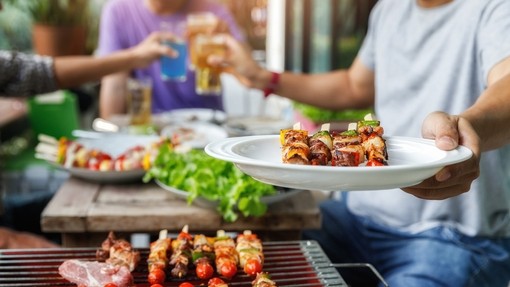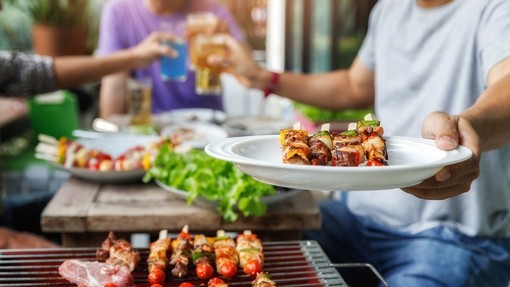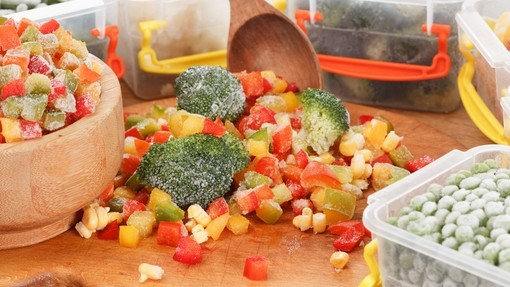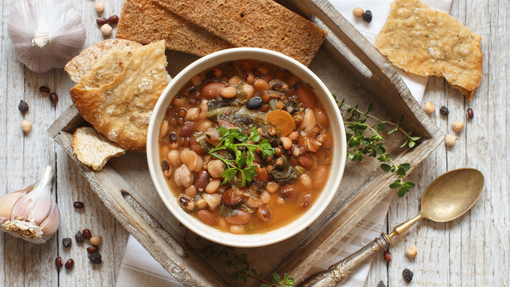
Cooking for toddlers and children: tips for saving food
There’s research to back up the anecdotal evidence. A number of studies have suggested that children could be influencing the amount of food waste generated in the home, from unfinished meals, buying more than is needed to provide a wide selection of food for the children, to intentionally cooking more than may be needed.
Anything you can do to lighten your load in the kitchen can only be a good thing, and if it also saves food, even better. Here are some top tips on saving time, money and food when you’re cooking for – and with – kids.
Get them in the kitchen
Isn’t it funny how they’ll turn their noses up at food you’ve cooked, but when the tables are turned and it’s them preparing the food, they’ll lick the plate clean? Once they’ve washed the spuds or stirred the sauce themselves, you may have more luck with getting them to eat it all up – so never underestimate the power of involving the kids in meal preparation when you can! Not only is it teaching them a valuable life skill, but it’s a great way to fire up their enthusiasm for all things culinary and to help them appreciate how their meals reach the table.
Meal planning and portion control
Devote a few minutes at the beginning of the week to planning what you’re going to cook for the evenings ahead – it saves you having to think what to make when you’re tired at the end of the day and the kids are hungry! Meal planning makes it easier to make sure you use up what you’ve already got in the fridge, freezer and cupboards, as well as helping you work out what you need to buy from the shop so that you don’t end up buying more than you need. It doesn’t have to be set in stone, but at least you’ll have a rough idea.
Figuring out how much food everyone needs can be tricky, especially when you’ve got kids of different ages and with different appetites. You can use our handy Portion Planner to work out how much of each ingredient you need for each member of the family (it’s broken down by age range for the kids) – this will help you buy and cook? the correct amount of food, saving money and making it easier to avoid wasting food.
Another way to keep portion sizes under control is to buy frozen food. This allows you to take out only what you need – such as the exact quantity of peas from a bigger bag, or a couple of fish fingers – and keep the rest in the freezer for another day.
When it comes to mealtimes, as a general rule it’s best to serve small portions, allowing second helpings if they’re asking for more. Giving children the opportunity to serve themselves from a central serving dish so they only take what they need also helps avoiding morsels left on plates and makes it easier to use any leftovers.
Batch cooking
Next, we come on to a real secret weapon for the busy parent: batch cooking. Batch cooking is a fantastic way to get ahead, enabling you to enjoy a few stress-free evenings where you only have to reheat what you’ve already cooked.
The best thing is that it takes little extra effort to scale up dishes you’re going to be cooking anyway – just multiply the quantities so that you then have some extra portions to freeze for another day. There are lots of child-friendly dishes that lend themselves beautifully to batch cooking, such as pasta (or just the pasta sauce), stews and casseroles, mild chilli con carne and risotto.
Love your leftovers
If they’ve not eaten everything you’ve prepared, keep the leftovers and use them to lighten your load another day. Whether you reuse boiled potatoes by frying them up as a tasty side for your grown-up meal, or you serve up leftover carrot batons as snacks with hummus, there’s always something delicious you can do with anything that’s left over from a meal. For example:
- Use fruit leftovers in baking – such as pancakes, muffins and cupcakes
- Mix leftover fruit with yoghurt and freeze for delicious ice lollies – perfect as a treat and for teething babies!
- Use veggie leftovers in other dishes – such as omelettes, savoury muffins or blended into soup
- Mash leftover carrots, broccoli or courgette and make delicious pinwheels – just mix them with spreadable cheese and add the mixture onto a puff pastry that you then roll and cut before cooking as per the instructions on the packaging
- Freeze leftover pasta, meat and sauces (or any other dish) in individual portions that are clearly labelled – an ideal way to ensure that you have a variety of quick and tasty home-made meals are available in the freezer at all times
- Freeze leftover fruit and veg throughout the week to use in smoothies.
Finally, you can also freeze leftover cooked vegetables (and other ingredients) to add into recipes further down the line – just one of the many useful shortcuts you can make thanks to your trusty freezer! Read more about foods you never knew you could freeze for some more food and time-saving tips.







